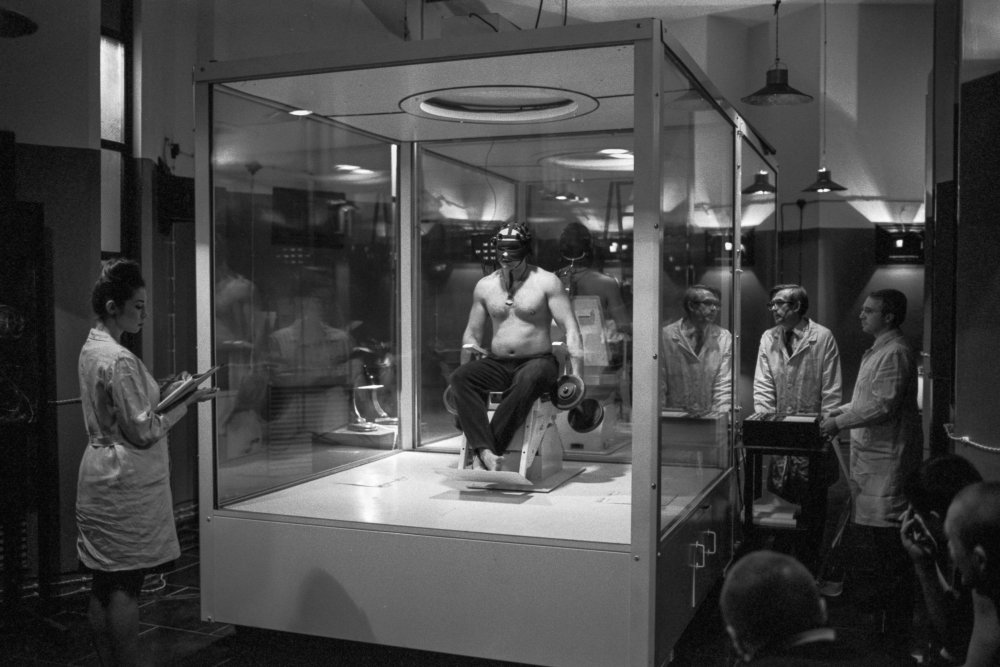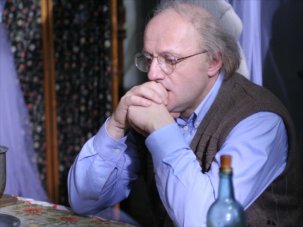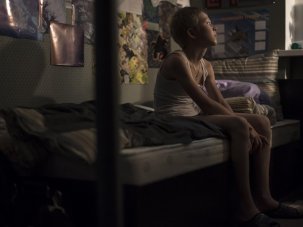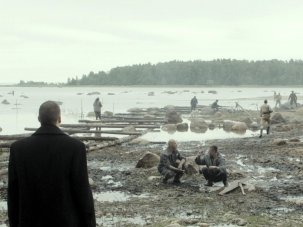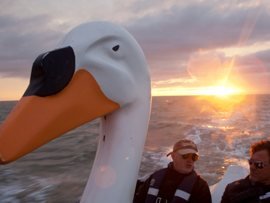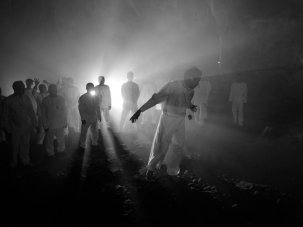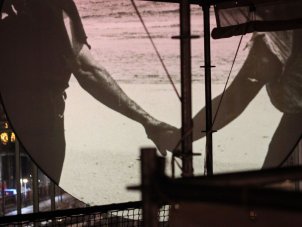The waxwork effigy of the female Soviet soldier sighs when you walk past it. The model of the old man burps. In the ballroom, one soldier hangs from the ceiling while an officer on his knees kisses the Soviet flag again and again.
Dau is on show at Théâtre du Châtelet and the Théâtre de la Ville in Paris 24 January–17 February 2019.
It is a very disconcerting experience to visit 100 Piccadilly, the Grade 1 listed building a few hundred yards from Green Park Station in London where Russian director Ilya Khrzhanovsky has been editing his epic folie de grandeur, Dau, for several years. From the outside, you are spied on by the model of a man standing in the window with his felt hat pulled over his eyes. (Presumably, he is meant to be an agent for the Ministry of State Security.)
The building, which stays open 24 hours a day, is a time capsule. As soon as you sign in with the Russian security guards and walk past the grand piano and through the x-ray machine at the entrance, you enter an ersatz Soviet world. Pictures of Stalin and young Russian workers cover the walls. Display cabinets are full of sweets, bric a brac, cigarette packets and even condoms from the period. There are constructivist posters and photographs of strapping Russian boys and girls on holidays. Every time you turn a corner, you are likely to bump into another of those waxworks, perhaps a Red Army soldier without a head slumped on a sofa with a table tennis bat beside him or a man in a great coat sleeping half way up the wall.
Dau, which is unveiled in an interactive show in Paris this week, has been in gestation since 2005. It was first conceived as a modestly budgeted European arthouse film. Khrzhanovsky, born in 1975, the son of filmmaker Andrey Khrzhanovsky, was then a 30-year-old Russian director, much feted by European producers and financiers. He had graduated from the celebrated Russian film school VGIK in 1998 and his debut feature, 4, had won a Tiger award at International Film Festival Rotterdam in 2005.
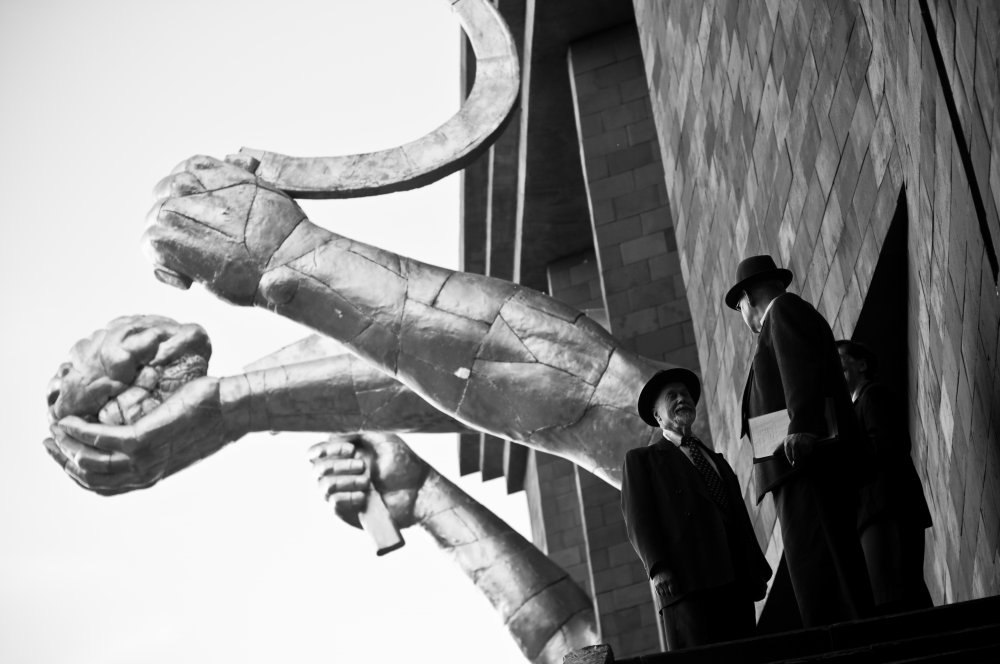
Dau (2019)
Credit: Olympia Orlova
Khrzhanovsky came to IFFR’s coproduction financing event, the CineMart, with Dau in February 2006. He had just formed his own production company, Phenomen Films, and blithely told the trade press that the $3 million film would be shooting by the autumn. He had funding from the EU (through Eurimages) and from German and Swedish sources. The film appeared to be a (relatively) straightforward biopic of Nobel prize winning physicist, Lev Landau (1908-68).
In fact, the main production on Dau didn’t start until 2009, when the director and his team decamped to The Institute, a huge, functioning experimental research facility in Kharkov, Ukraine. This was specially built for the film and recreated in the minutest detail the facility in which the real Lev Landau worked. “The Institute existed within a parallel spatial and temporal universe: a meticulous historical reconstitution spanning the years 1938 to 1968,” explains the new Dau brochure, produced for the show in Paris.
The filmmakers spent over two years here, shooting 700 hours of 35mm material from which they eventually edited 13 features. Twelve of these features will be in the Paris exhibition. It was at this point that Khrzhanovsky went off the grid and that reports began leaking out from the set suggesting that he was turning into European cinema’s answer to the morally unhinged Colonel Kurtz in Apocalypse Now.
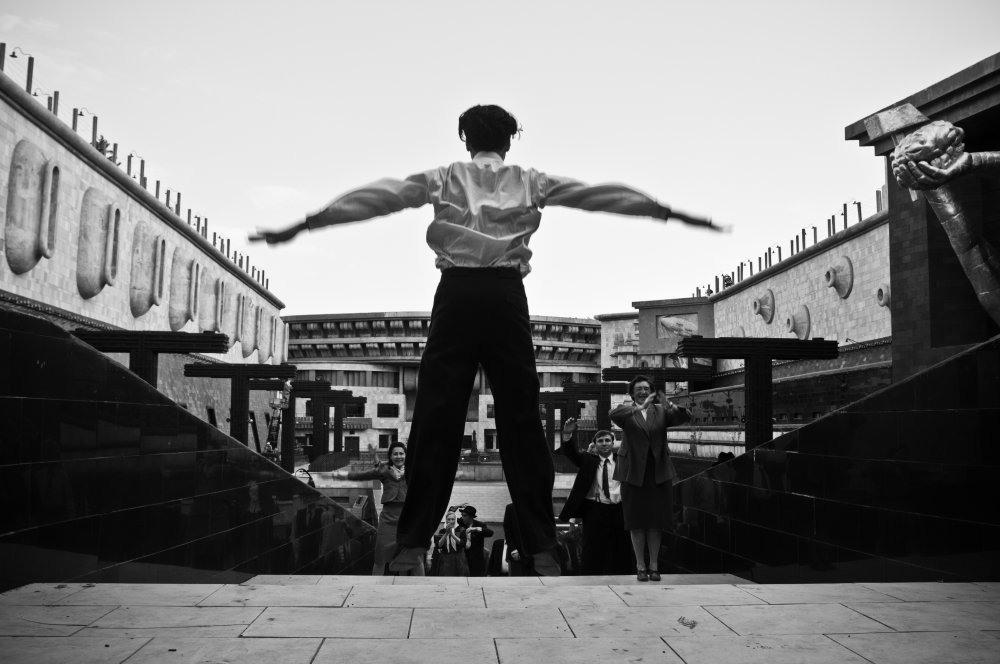
Dau (2019)
Credit: Olympia Orlova
Appearing in the films, or working on them, was reported as being equivalent to joining some strange new cult. Dau straddled the lines between documentary and fiction. “With the USSR and scientific research as their backdrop, the stories that manifest are these of the human species in their most eternal iterations: love and sex, violence and treason, alcohol and dreams are omnipresent. Domestics and politics are closely mixed,” reads the official synopsis.
The project far outstripped its origins as a single arthouse film. Khrzhanovsky had found himself a wealthy and influential backer, Russian fruit importer and tech entrepreneur Serguei Adoniev, and the budget for the project had rocketed. Dau was becoming, as newspaper and magazine headlines put it, “the movie that ate itself” and “the most insane film shoot of all time”. The filmmakers’ own audit of their production seems to live up to such a description: “392,000 auditions, 40,000 costumes. 12,000 square metre set, 10,000 extras, 400 principal roles, which have resulted in 700 hours of 35mm film, 8,000 hours of recorded dialogue, 37 million words transcribed, 4,200 concept tags and 500,000 set photographs.”
Instead of professional actors, Khrzhanovsky filled the film with real-life scientists, musicians, artists, composers, religious leaders and philosophers. They weren’t just acting. They were doing ‘real’ work at the Institute – and they were having ‘real’ sex and ‘real’ arguments too. Collaborators during production and the many years of post-production included everybody from Marina Abramović to Brian Eno, from Peter Sellars to Robert del Naja of Massive Attack.
I first visited 100 Piccadilly in the spring of 2015 at the invitation of its producer, Susanne Marian, who had been with the project since the beginning. She made it clear, though, that I would not be allowed to see any of the Dau material unless I signed a very draconian Non-Disclosure Agreement. When I declined to do so, I was politely but promptly escorted out of the building. In early January 2019, Marian contacted me again, saying that Dau was finally ready to be released in the massive exhibition in Paris, running 24 January to 17 February, and that I could come back into Piccadilly to see some of the films.
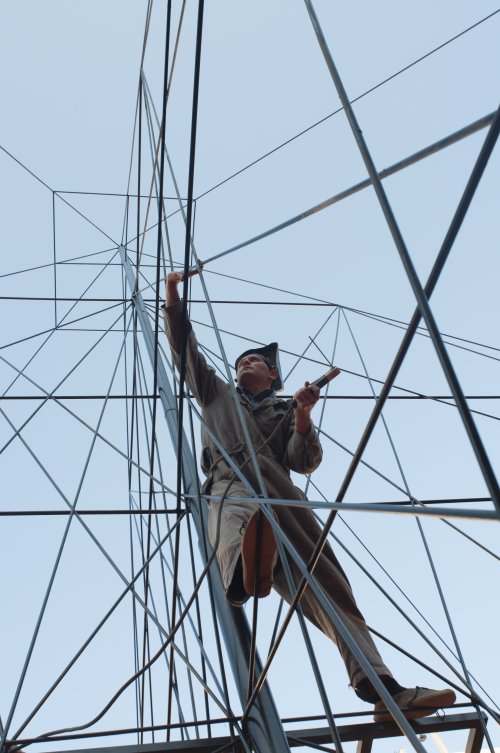
Dau (2019)
Credit: Olympia Orlova
After years of trying to maintain top secrecy on the project, the Dau team members were taking time to adjust to the fact that they actually now needed to publicise it. Again, I was presented with the frightening looking NDA with all its threatening sub-clauses about what would happen to anyone who so much as whispered about what they saw. My own experiences mirrored those of visitors to the Institute in one of the films who are told, “everything you hear in here must die in here.” However, once it was pointed out that the international press launch of Dau in Paris was less than a fortnight away, the ban on reporting was lifted.
Visitors to Paris don’t buy conventional tickets. They apply for visas. The idea is that they leave their “belongings, and their connection to the outside world behind”. Each participant has to fill in a psychometric questionnaire, “the first step in a strict procedure. Answers will be treated by an algorithm, which will then create a personalised user journey.”
In advance of my viewings in London, I wasn’t required to fill in the questionnaire but someone came up with a screening schedule for me. I was required to commit to watching at least four hours of material at a time. The films I saw turned out to be fascinating and wildly uneven. There were no specific credits on any of them but it was explained that they had been put together by a team of “editor-directors”.
The first two features were Scenes From a Marriage-like chamber pieces set in the private apartment in the Institute that Lev Landau shares with his wife, Nora, and son, Denis. They make a relatively soft entry point into the Dau cycle, which soon grows far, far darker and more disturbing. Dau is played by Greek-Russian conductor Theodoros Kourentzis. He’s a brilliant scientist but also a hedonist and a relentless womaniser. In lengthy shots filmed handheld and very close up on a 35mm camera by cinematographer Jürgen Jürges, we see him, Nora (Radmila Shchyogoleva) and his Gloria Swanson-like mother in law (Lydia Shchegolova), sitting around the dining table, exchanging very vicious small talk.
The cheese is black, the wine is old and the Dau family seem pretty wretched. Reportedly, no scene was ever shot twice. “Eventually, he (Dau) will find a younger woman and leave you. He’s a genius!” Nora is warned by her mother.
Sequences last for a mini-eternity. Every so often, there is a fade to black or we will see the characters outdoors in the grounds of the Institute, playing in the snow with the mother in law’s pet Labrador and tending little Denis who, at this stage, is a dimple-chinned tot. It is all moderately absorbing in a sub-Bergman or Fassbinder fashion but nothing that you won’t have seen before in many other psychodramas about strained marriages.
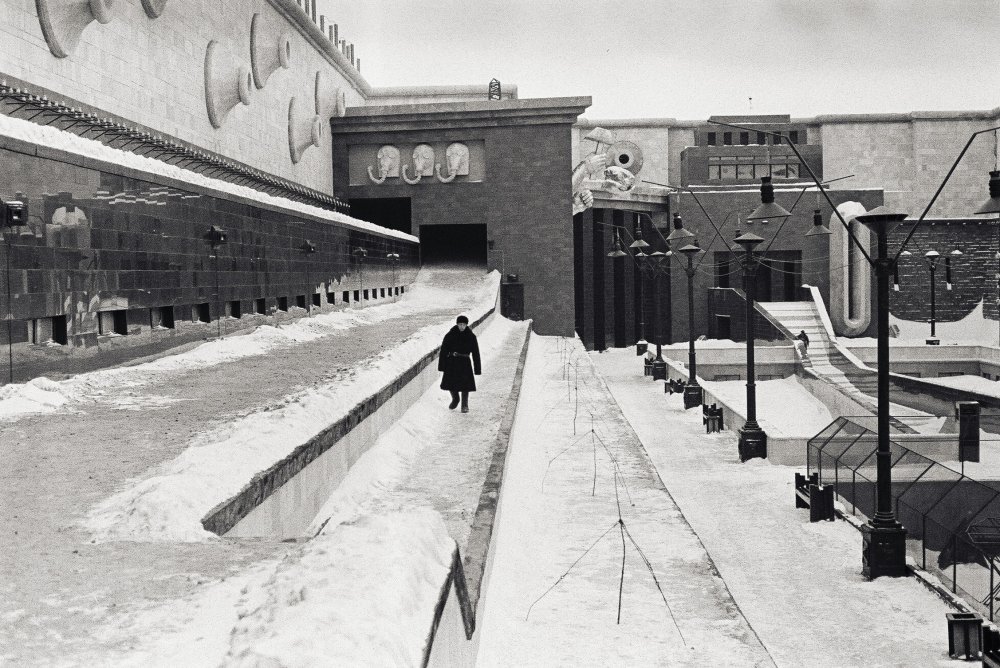
Dau (2019)
Credit: Volker Glaeser
Several of the Dau films don’t have subtitles. You watch them in Russian and listen to simultaneous translation into English on an earplug that you place in your left ear. This is apparently the way foreign films were shown in the Soviet Union but has an inadvertently comic effect. The voiceovers are affectless. During sex scenes or vicious arguments, the voices stay in the same monotone. Actors often appear to be playing themselves or versions of themselves.
The second film I was shown was stronger, although in a similar mould. Nora is away. Dau has the apartment to himself. He is visited by his old Greek girlfriend, the very glamorous Maria (Maria Nafpliotou), apparently a real-life former girlfriend of Kourentzis. They talk about love and poetry. Dau memorably describes himself as not so much a kid as an anti-adult. The couple rekindle their relationship – and then Nora returns home unexpectedly, provoking the predictable bitterness, sexual jealousy and morbid comedy. There is also a strange interlude in which Dau looks to hire a new family maid and puts three improbably glamorous young women through a strange interview process in which they’re made to leap around the apartment like Greek nymphs.
The Dau films cover a 30-year period, from 1938 to 1968. If you don’t see them in sequence, the lurches back and forward in time can be very jolting. The third film I saw was one of the final ones and was set in the same apartment but in the late 1960s. Dau (now played by another actor) had turned into a bedridden old man. Denis had grown up to become a gawky, grinning, Billy Bunter-like teenager in braces and baggy trousers. Nora is still played by Shchyogoleva as an older woman. Denis flirts with the maid, Anya, but eventually has full blown sex with his own beloved mother. The incest scene is all the more incongruous because he still wears his spectacles as he does so. We could be in the world of Lars Von Trier’s The Kingdom or The Idiots.
Much more coherent narratively was the fourth film I was shown, the final one in the cycle, which shows the Institute in its dying days in the late 1960s. This opens with a man in a Hannibal Lecter-like mask sitting in a glass booth, lifting weights as scientists peer in at him. They are trying to create the “perfect soldier”, an “individual who can endure far longer and take heavier loads”.
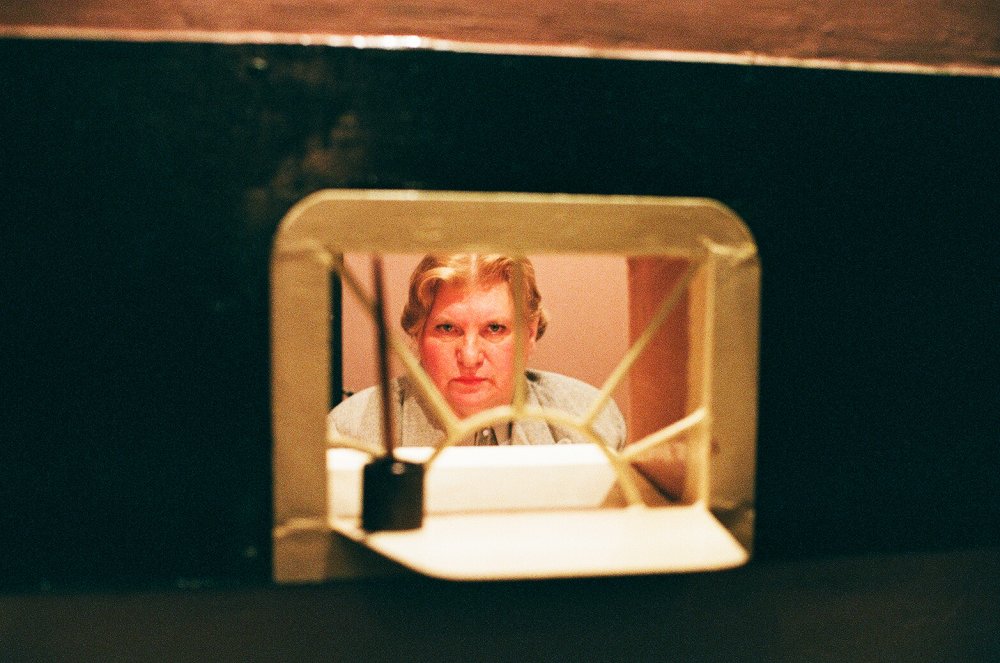
Dau (2019)
Credit: Olympia Orlova
The authorities have grown sickened by the hedonism and decadence in the Institute. The head of the Institute, who boasts of having organised mass executions during the war, has brought in five young soldiers to clean the stables up. These youthful thugs are played by real-life Russian fascists. Maksim Martsinkevich, a notorious neo-Nazi activist who goes under the nickname Machete, plays their ringleader, Maxim. He and his colleagues unleash a campaign of “focused terror” against the decadent scientists. The film ends in a bloodbath as the fascist thugs run amok. Before this happens, Maxim has an affair with Vika (Viktoria Skitskaya), one of the barmaids in the Institute. This begins with hardcore sex, but his affection for her briefly seems to shake him out of his own fascistic beliefs.
While this episode is as close as Dau comes to an action movie, another film in the series, Dau 2, set in the early 1950s, is a chilling, Kafkaesque political drama which lays bare the paranoia and antisemitism in the period. Scientists are feted as long as their research provides results. “If your work doesn’t lead to a scientific truth, then it is a crime,” they are told.
The scientists all live in communal apartments in the Institute. They drink and bicker. There is jealousy between the wives, boredom and neurosis. Agents from the Ministry of State security are always snooping outside their windows, ready to arrest them on trumped up charges and to make them sign confessions. “He behaved like a man of property and an individualist,” is the damning verdict on one of the hapless professors who falls foul of the regime. We see a Jewish scientist being bullied and humiliated by state security interrogators. (He is played in a remarkably accomplished way by Professor Andrey Losev, a non-actor and in real life a senior researcher at the Institute for Theoretical and Experimental Physics.)
Counterbalancing the high-minded talk about science in some of the films is the base humour in Dau 8, which foregrounds the experiences of the cleaners and workers in the Institute. They seemingly spend all their time off duty in the Institute getting drunk and having messy sex. If you enjoy seeing elderly cleaning ladies vomiting into buckets, this is the film for you.
The movies themselves are only part of the Dau experience, which falls somewhere between a behavioural experiment, a cinematic cycle and an art installation. A 13th film, which is not yet ready to be shown but for which there is a trailer, appears to be a far more conventional Dr Zhivago-like Russian epic, with traditional editing, music and a linear storyline, spanning decades. (This is the film first pitched in Rotterdam back in 2006 and is likely to be released in cinemas in a traditional way.) Viewers can also, in theory, knit together their own Dau film experiences and fill in gaps left by the 13 features by delving into the hundreds of hours of footage available on the Dau digital platform.
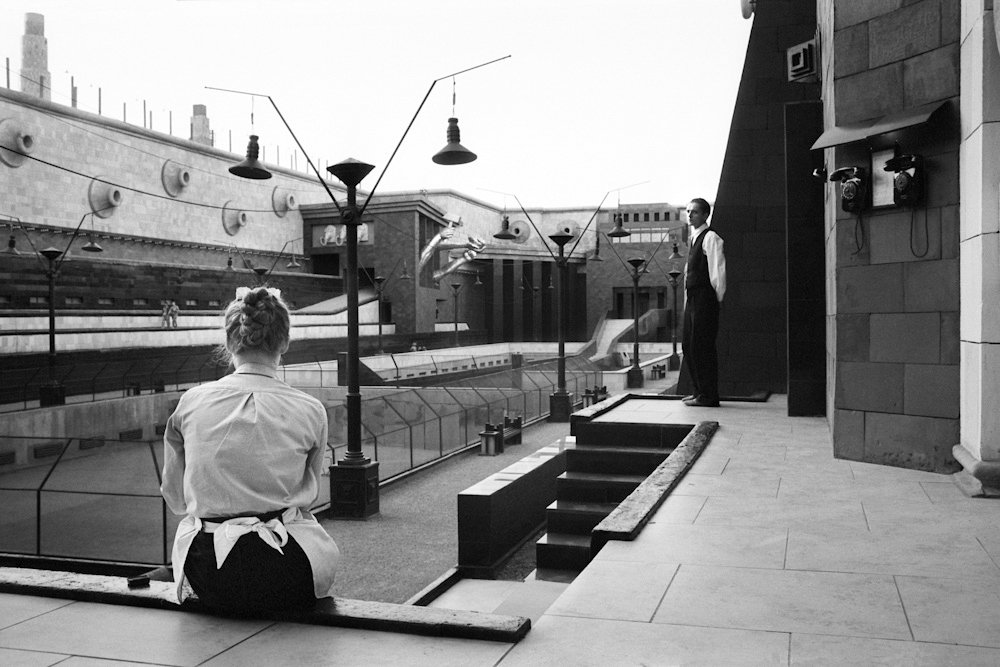
Dau (2019)
Credit: Jörg Gruber
Several of the films have images of lab rats and scientists experimenting on them, sticking syringes in their brains. A cynical reading might view Khrzhanovsky as treating his performers in the same way as the men and women in white coats do the rodents, locking them away in the Institute and pushing and prodding them to see what reactions he gets out of them. What can’t be denied, though, is the richness and mindbending scale of the Dau project.
Outsiders thought that the director had gone mad and that Dau would never be seen in public. That is not the case. Provocative, demented, sometimes simply tiresome, the Dau films are the strangest cultural artefacts you’re likely to encounter any time soon. The Dau experience is set soon to come to the UK where it is bound to provoke the same intense curiosity and trepidation as it has done elsewhere. Following the Paris show, which has its world premiere this month at the Théâtre du Châtelet and the Théâtre de la Ville, the international launch of what is still described as an “ongoing experiment” will continue with a show in London in the spring (and a third Dau exhibition is planned for Berlin later in the year).
With Dau, Khrzhanovsky has created a world which is both fascinating and nightmarish. The project is both a collective endeavour and a testament to its director’s own egotism. You ridicule it at your peril.
-
The Digital Edition and Archive quick link
Log in here to your digital edition and archive subscription, take a look at the packages on offer and buy a subscription.




